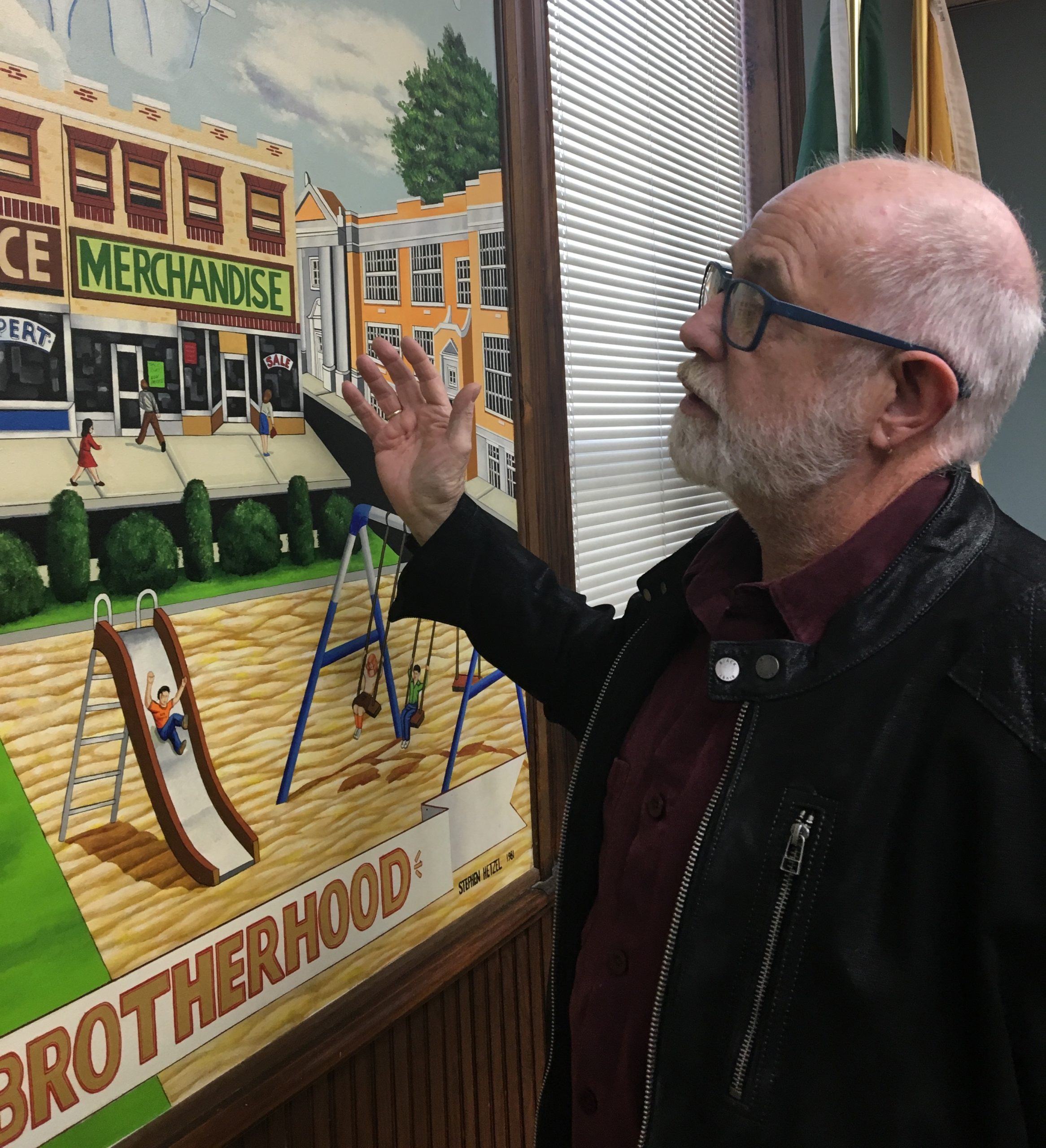A century ago, the Village of New Hyde Park did not exist.
It was just unincorporated farm land before its 1927 incorporation, the “gladiolus capital of the country,” according to New Hyde Park Museum Vice President Mildred Tassone. A train station, grammar school, some houses and store fronts were the origins of what is now a village with 10,000 residents.
Steve Hetzel tried to capture all of the aspects of the village’s history when he painted the Village Hall courtroom’s mural 38 years ago, a work which he only recently revisited for the first time in decades.
The 1981 mural is still as sharp as it was when he painted it, Hetzel, now 66 and still painting, said. The red bricks and cement lined meticulously in his depiction of Village Hall, the sandy dunes of the children’s playground, the glass-pane windows and bright orange coat on the school building have seen no decay in vibrancy.
Hetzel, born in Staten Island, was a New Hyde Park resident for a time. He moved to the village in 1972, before eventually relocating to nearby Floral Park.
While serving stints as a member of the New Hyde Park parks commission and library board, he said all of his neighbors were trustees and mayors, current and former, and that the sense of community was palpable.
Approached by his neighbors, Hetzel agreed to paint a mural, a volunteer gig where only his supplies were paid for, depicting the community and its history.
With the help of George Christ Jr., a descendant of some of the first settlers of what would become New Hyde Park, Hetzel delved into the history of the village to paint real life onto the wall as accurately as possible.
To capture all of the elements he desired, Hetzel said, he eliminated perspective from the mural, instead electing to depict all that the village had and was in the past.
Village Hall is not next to the Long Island Rail Road tracks, nor is it shouting distance from the post office, but the concentration of all these elements was vital to capturing the history. Hetzel even included a blacksmith, a symbol representing Christ’s ancestors, in the clouds.
On Sunday, Hetzel discussed the background of the mural and the historical significance of the events it represents at Hillside Public Library, in conjunction with the village’s museum event series.
An incalculable amount of people have been in and out of the courtroom since Hetzel brought brush to wall all those years ago. The room hosts several of the village’s board and committee meetings, including the twice monthly Board of Trustees meeting.
For all the visitors that pass through the room and the sunlight that illuminates it from the north side of the building, the painting has not chipped or suffered ultraviolet bleaching. The only upkeep in the last 38 years has been an occasional dusting.
Hetzel, running his fingers along the 8-by-6 1/2-foot painting, said he couldn’t believe how the colors still popped off the wall and the acrylic paint still had not chipped.
Acrylic was the best option at the time, according to Hetzel. Oil paint would have chipped over time, tempura-based water paints would have been subject to bleaching or otherwise natural fading. The decision has withstood the test of time.
Staring long enough at the painting, it is hard to imagine the next 38 years will prove any different.



